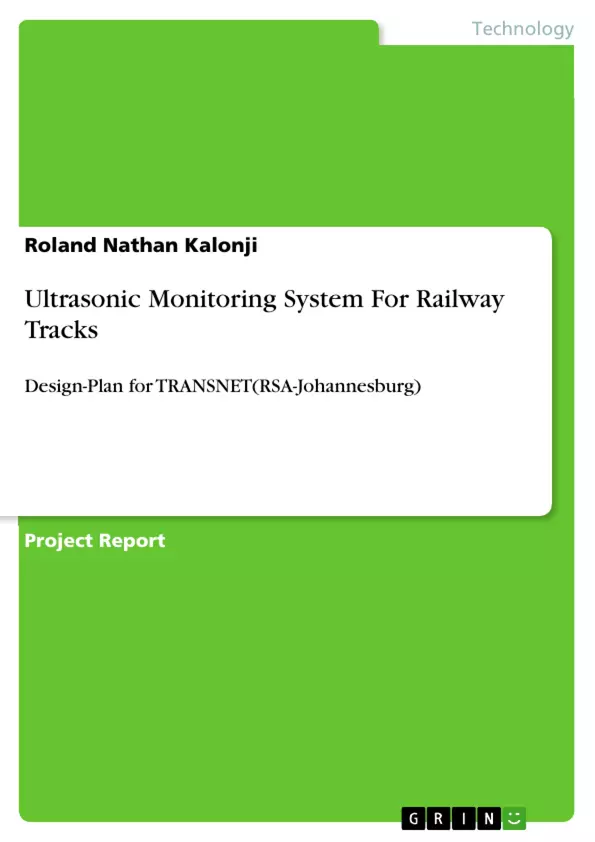Ultrasonic system provides early warning of anomalies within the railway track; this provides mitigation against the risk of derailment due to a broken rail whereby some common rail defects include squats, wheel burn, inclusions and surface cracking where 90% is due to cracks on the rails either due to natural causes or due to antisocial elements. Railway tracks are then subjected to very large forces even when operated under normal traffic conditions and exposed to potential extremes of temperature from our environment. Thus the intended purpose of this report is to present different scenarios of the Ultrasonic monitoring railway tracks (full crack, minor crack and zone fully monitored) for Transnet (RSA,Johannesburg) and to itemize several design materials (transmitter, receiver, PLC, GSM, etc.).
Inhaltsverzeichnis (Table of Contents)
- 1. Introduction
- 1.1 Motivation and Background
- 2. Design (Overview)
- 2.1 Approach
- 2.2 Methodology
- 2.2.1 Concept (Scenarios)
- 3. Design (High level scope)
- 4. References
Zielsetzung und Themenschwerpunkte (Objectives and Key Themes)
This report presents a design plan for an ultrasonic monitoring system for railway tracks in South Africa. The system aims to provide early warning of anomalies within the tracks, mitigating the risk of derailment due to broken rails. The report focuses on developing a comprehensive solution to address the significant security and safety challenges faced by Transnet, a South African parastatal company responsible for freight logistics. The primary objective is to minimize or eliminate derailment incidents caused by track theft and broken tracks.
- Railway track safety and security
- Ultrasonic monitoring technology
- Transnet's operational challenges
- Design and development of a monitoring system
- Business case development
Zusammenfassung der Kapitel (Chapter Summaries)
The report begins with an introduction outlining the motivation and background for the project. It highlights the significant safety and security challenges faced by Transnet, particularly the high incidence of derailments due to track theft and broken rails. The report then delves into the design overview, outlining the approach and methodology employed. This includes a detailed analysis of different scenarios, such as full broken tracks, minor cracks, and fully monitored zones, to understand the potential threats and how the ultrasonic monitoring system can address them. The report concludes with a high-level scope of the design and a list of references.
Schlüsselwörter (Keywords)
The key focus areas of the report include railway track safety, security challenges, derailment prevention, ultrasonic monitoring, Transnet, South Africa, design plan, and business case development. The report emphasizes the application of ultrasonic technology for early detection and mitigation of track anomalies, contributing to improved safety and operational efficiency in the railway sector. The report also addresses the importance of a comprehensive business model to support the implementation and maintenance of the proposed monitoring system.
- Quote paper
- Roland Nathan Kalonji (Author), 2017, Ultrasonic Monitoring System For Railway Tracks, Munich, GRIN Verlag, https://www.grin.com/document/412802



